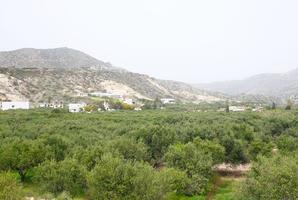Pilalimata
Pilalimata is an old small village south of Pefkoi, a continuance of Analypsi, which is on the way to Sitia and about 1000m far from the seacoast, the beaches of Diaskari and Lagkadas.According to tradition its legacy started prior to the sovereignty of the Turks; yet it is not known for a fact who founded the village. In line again with tradition it is widely believed that the Byzantines have seized large territories of land that was occupied by Saracens and built northeast of Pilalimata the great monastery of Kera Panagia (Virgin Mary). Following native population built a metochi (Monastery Dependency) 350m away from the Abbey, where they produced livestock and cultivated land for living. During the Venetian rule it is said that a large number of the region’s properties and part of the monastery was granted to Venetian settlers; others say that Pillalimata was built by the Venetians, but after the destruction of the monastery by the Turks in 1941.
The landscape of the village is flat, and the land known for its fruitfulness; that is mainly the reason that this particular estate was always a property of high ranking officials of the conquerors, Byzantines, Venetians and Turks. The greater region of the village is also referred to the Byzantine Loukas Litinas or Lithinas, whose descendants are believed to be the residents of the nearby village "Lithines". Pilalimata was his tsifliki (private estate), and he was left in history as one of the most dreadful tyrants that the region has seen.
It is alleged that the name Pillalimata comes from the word ‘lima’ which means profit or taken from somewhere. It is also said that the village’s name comes from the word ‘limata or pola pila’ (muddy); a product of geological phenomena caused by a nearby river. Others say that the village was named after a Turkish ‘Aga’ (Ruler), whose name was Pilalis. During the Greek Independence war on 1897 the village was destroyed by fire, and four Turks were killed. Residents of Pefkoi collected the debris of three cypresses, and built onto it the temple of the Orthodox church of the Three Hierarchs.
Πηγή:
«Πεύκοι “Τόπος και Ιστορία”», Γεωργίου Θ. Καναβάκη (Καναβογιώργη), Έκδοση Κοινότητας Πεύκων, Ιούλιος – Αύγουστος 1994


